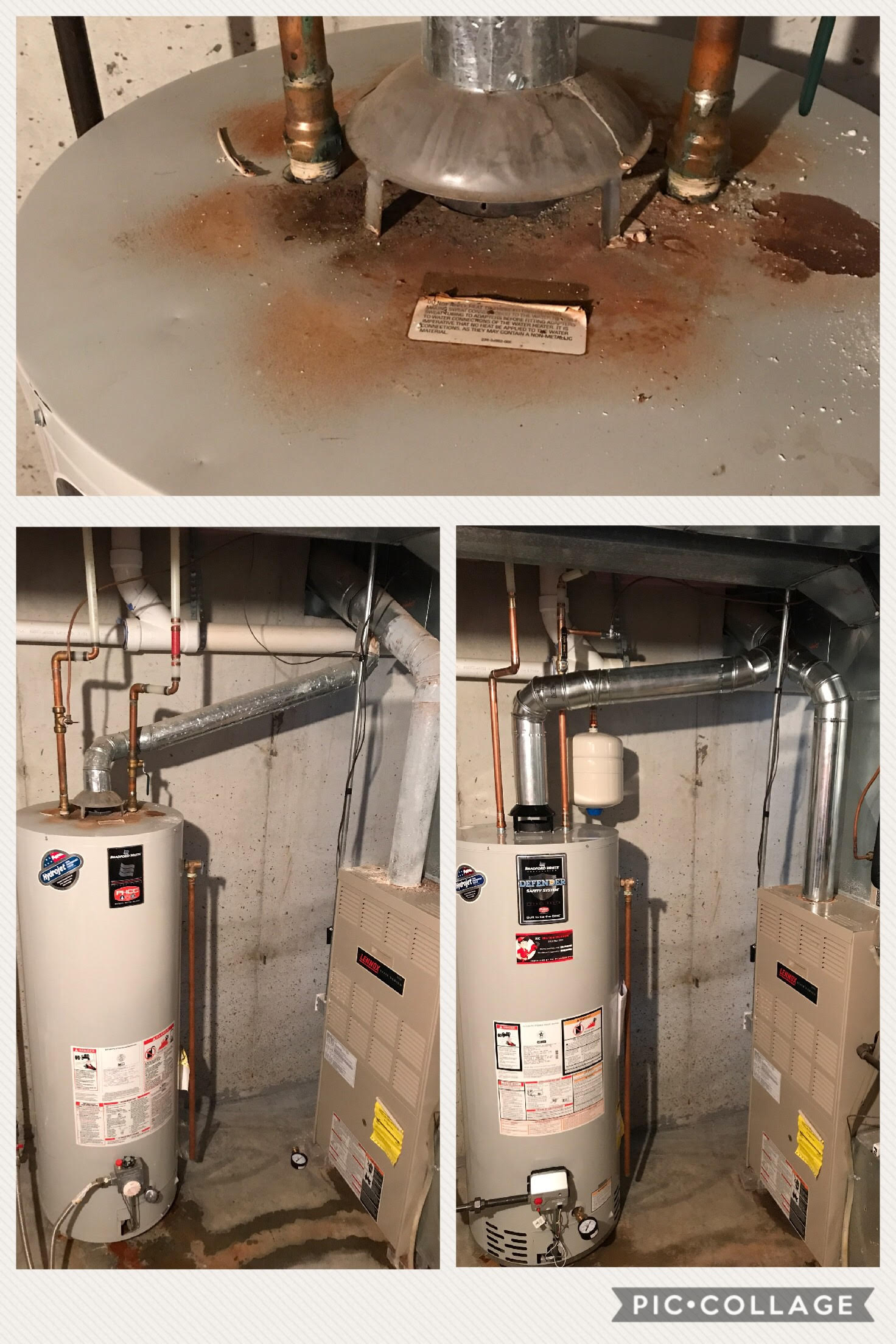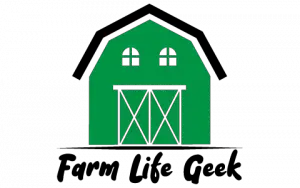Open the valve on the gas water heater to release any pressure that may have built up in the tank. Place a bucket under the valve to catch any water that may drip out. Once the water stops running from the valve, close it and remove the bucket.
- Go to the basement where the gas water heater is located
- Locate the pressure relief valve on the side of the water heater
- Place a bucket or container under the valve in case water starts to come out when you open it
- Use a wrench to open the valve by turning it counterclockwise until water starts coming out
- Let the water run for a few minutes until you hear a hissing sound, which means that all of the air has been released from the tank
- Close the valve by turning it clockwise and remove the bucket or container from underneath it
How to Vent a Hot Water Heater Without a Chimney
Most houses have a central heating system with a furnace or boiler. The hot water heater is usually connected to the same flue that serves the furnace or boiler. If your home doesn’t have a chimney, you can still vent the hot water heater through an exterior wall.
You’ll need to install a stainless steel vent pipe and an exterior termination cap. The first step is to cut a hole in the exterior wall large enough to accommodate the size of vent pipe you’re using. You’ll also need to make sure there’s room behind the wall for the length of pipe you need.
Next, attach the vent pipe to the hot water heater using metal tape or clamps. Then run the pipe through the hole in the exterior wall and secure it in place with more metal tape or clamps. Finally, attach the termination cap to the end of the pipe sticking out from your house.
Now your hot water heater will be properly vented without needing a chimney!
Gas Water Heater Venting Options
There are several gas water heater venting options available, and the best option for your home depends on a variety of factors. The most common type of gas water heater is the natural draft water heater, which uses a chimney to exhaust fumes. These types of heaters are typically less expensive to install than other options, but they require more maintenance and may not be as energy efficient.
Another option is the power vent water heater, which uses an electric fan to force exhaust fumes out through a vent pipe. These types of heaters are more expensive to install, but they’re generally more energy efficient and require less maintenance.
Finally, there are sealed combustion water heaters, which don’t have any vents at all.
Instead, they rely on sealed combustion chambers to prevent exhaust fumes from entering your home. These heaters are the most expensive to install, but they’re also the most energy efficient and require no maintenance whatsoever.
Gas Water Heater Vent Pipe Installation
If you have a gas water heater in your home, it is important to make sure that the vent pipe is installed correctly. This pipe helps to release exhaust gases from the water heater and prevents them from entering your home. Here are some tips for installing a gas water heater vent pipe:
1. The first step is to determine the route that the vent pipe will take. It should be routed so that it does not come into contact with any flammable materials, such as wood framing or insulation.
2. Once you have determined the route, cut a hole in the wall or ceiling where the vent pipe will exit the building.
The hole should be large enough to accommodate the size of the vent pipe.
3. Install a section of vent pipe from the water heater to the hole in the wall or ceiling. Make sure that all joints are securely fastened and sealed with silicone caulk or other appropriate sealant.
4. Run another section of vent pipe through the hole in the wall or ceiling and extend it to at least three feet abovethe roofline of your home . Use screws and hangers to secure this section of piping in place . If necessary, use additional sections ofpipe to reachthe proper height abovethe roofline .
Venting a Gas Water Heater Through Wall
If your home has a gas water heater, you may need to vent it through the wall. This is because gas water heaters produce fumes that need to be released outdoors. Venting a gas water heater through the wall is not difficult, but it does require some planning.
First, you’ll need to determine where the best place to vent the gases would be. The location will likely be determined by the route of the flue pipe. Once you’ve found the ideal location, mark off an area on the wall that’s big enough for the vent hood.
Cut a hole in the drywall using a saw and then install the vent hood according to the manufacturer’s instructions.
After installation, turn on your gas water heater and test it out. If everything is working properly, you should see fumes being released from the vent hood outside of your home.
How to Vent a Gas Water Heater Through the Roof
If your gas water heater is located in an area where vented gases could create a safety hazard, you may need to vent the unit through the roof. This process is not difficult, but it does require some basic knowledge of plumbing and ventilation. Here’s how to vent a gas water heater through the roof:
1. Disconnect the gas supply line from the water heater. You’ll need a wrench to loosen the coupling nut that secures the line to the unit.
2. Place a section of PVC pipe over the opening where the gas line was attached.
The pipe should be long enough to extend up through the roof and beyond by at least a few feet.
3. Secure the PVC pipe in place with tape or clamps. Make sure that there are no leaks at this connection point.
4. Drill a hole through the roof near where the pipe extends through it. The hole should be just large enough for the pipe to fit snugly inside of it.
5. Insert the pipe into the hole and seal around it with caulk or putty, making sure that there are no gaps or leaks.
Allow this sealant to dry completely before proceeding further (this step is critical because any leak here could allow explosive gases into your home).
6 Reconnectthe gas supply line tothe water heater (again usinga wrenchto securethe coupling nut). Turn onthe gas valve slowly until you reachthe desired level (usually about 1/4 turn).
Testfor leaksat all connectionsusing soapywater appliedwitha brushor sponge- if bubbles form,you havea leakthat needs tobe addressedbefore proceedingfurther!

Credit: kcwaterheater.com
What is the Proper Way to Vent a Gas Water Heater?
If you have a gas water heater, it’s important to know how to properly vent it. Otherwise, you could end up with dangerous fumes in your home. Here’s what you need to know about venting a gas water heater:
The first thing to understand is that all gas appliances need to be vented. This includes your water heater, furnace, and even your stove. The purpose of venting is to allow dangerous gases like carbon monoxide to escape from your home.
There are two types of vents that can be used for a gas water heater: natural draft and power-vented. Natural draft vents use the rising hot air to create a draft that pulls the fumes out of the appliance and up through the chimney. Power-vented vents use a fan to force the fumes out of the appliance.
Most modern water heaters are power-vented because it’s more reliable than natural draft venting. However, power-vented vents can be more expensive and require more maintenance than natural draft vents.
Either way, it’s important that your vent is sized correctly for your water heater.
If it’s too small, the fumes won’t be able to escape and will build up in your home. If it’s too large, the draft could be strong enough to damage the seals around the appliance or cause other problems.
You should also make sure that there are no obstructions in front of or behind your water heater that could block the flow of air through the vent (this includes furniture, boxes, etc.).
And finally, if you have an electric water heater, don’t forget that it still needs ventilation!
Can You Vent a Gas Hot Water Heater Out the Side of the House?
No, you cannot vent a gas hot water heater out the side of the house. The exhaust fumes from a gas hot water heater need to be vented through a pipe that goes up and out the roof. If these fumes are vented into your home, it can create an unhealthy and dangerous environment.
Can I Use Pvc to Vent Gas Water Heater?
While PVC pipe is often used for drainage purposes, it can also be used to vent a gas water heater. When properly installed, a PVC pipe can safely vent the fumes and byproducts of a gas water heater out of your home.
However, there are some important considerations to keep in mind when using PVC pipe for this purpose.
First, the diameter of the pipe must be large enough to accommodate the volume of gas being vented. Second, the length of the pipe should be as short as possible to minimize the risk of fumes and gases leaking into your home. Finally, the PVC pipe must be properly sealed and supported to prevent collapse or damage.
If you’re unsure about whether or not your installation meets these requirements, it’s best to consult with a professional before proceeding.
Can You Put a Gas Water Heater in a Basement?
If you live in an area with very cold winters, it’s important to know that a gas water heater can be installed in a basement. This is because the basement is typically the warmest part of the house, and installing the water heater in this space can help to prevent frozen pipes. Additionally, if you have a high-efficiency water heater, it’s important to install it in an area where there is adequate ventilation so that the combustion gases can be properly exhausted.
Conclusion
If you have a gas water heater in your basement, it’s important to vent it properly. Otherwise, you could end up with a dangerous buildup of carbon monoxide. Here’s how to do it:
First, open the valve on the gas line that supplies your water heater. This will allow any gas that has built up inside the heater to escape.
Next, open all the windows and doors in your basement to get some fresh air circulating.
Then, light a match and hold it near the opening of the water heater’s exhaust pipe. This will help draw any remaining gas out of the heater.
Finally, close the valve on the gas line and make sure all the windows and doors are closed before relighting your pilot light.
